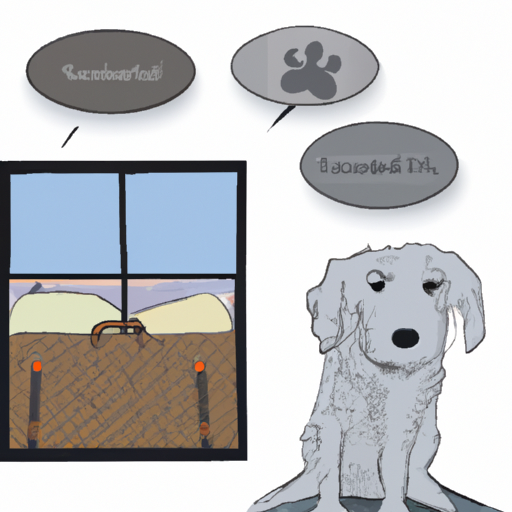As a caregiver, your dog’s wellbeing is of utmost importance to you. One of the issues that you may face is separation anxiety in dogs. This guide will provide insight into what causes separation anxiety, how it manifests, and how it can be mitigated.
1. Understanding Separation Anxiety
Separation anxiety in dogs is a distressing condition where the dog becomes anxious when their owner is not around. The anxiety can manifest through a variety of behaviors, including destructive chewing, inappropriate elimination, incessant barking, and more.
2. Causes of Separation Anxiety
There isn’t one specific cause of separation anxiety in dogs. It’s often a combination of genetic predisposition and environmental factors. Here are some common causes:
- Change of Guardian or Family: If a dog is rehomed or there is a significant change in the family structure, it can trigger separation anxiety.
- Change in Schedule: Dogs thrive on routine. A sudden change in the schedule can cause anxiety.
- Change in Residence: Moving to a new place can be stressful for dogs, and can lead to separation anxiety.
- Change in Household Membership: The addition or loss of a family member (human or pet) can cause stress.
- Prolonged Separation: Long periods of separation from the owner can trigger anxiety.
- Age-related Changes: Older dogs may develop separation anxiety due to cognitive decline.
3. Symptoms of Separation Anxiety
Dogs suffering from separation anxiety exhibit a range of symptoms. Common signs include:
- Excessive barking or howling
- Destructive behavior
- Pacing
- Accidents in the house
- Excessive salivation or drooling
- Attempts to escape
4. Diagnosing Separation Anxiety
Separation anxiety can only be diagnosed by a veterinarian or a professional behaviorist. They will ask about your dog’s history, behavior, and the circumstances around the anxiety episodes.
5. Treating Separation Anxiety
Treatment of separation anxiety in dogs involves a combination of behavioral modification and, in some cases, medication.
- Behavioral Modification: This involves training the dog to be comfortable when left alone. It may include desensitization and counter-conditioning techniques.
- Medication: In severe cases, medication may be required. Always consult with a veterinarian before administering any medication.
6. Preventing Separation Anxiety
Preventing separation anxiety involves creating a secure and comfortable environment for your dog. Here are some strategies:
- Maintain a consistent routine.
- Provide plenty of physical and mental stimulation.
- Avoid emotional departures and arrivals.
- Gradually increase the time your dog spends alone.
7. Separation Anxiety vs. Isolation Distress
Isolation distress is a milder form of separation anxiety. Dogs with isolation distress are comfortable being alone as long as they are with someone, be it a human or another pet.
FAQ
Q1: Can separation anxiety in dogs be cured?
A: While it may not always be completely curable, with appropriate intervention, it can be managed effectively.
Q2: Can a dog die from separation anxiety?
A: Extreme cases of separation anxiety can lead to self-injury, but death is quite rare.
Q3: Can puppies have separation anxiety?
A: Yes, puppies can have separation anxiety, usually when they are separated from their mothers too early.
Q4: Are certain breeds more prone to separation anxiety?
A: While any breed can develop separation anxiety, some breeds such as Labrador Retrievers, German Shepherds, and Vizslas are thought to be more prone.
Q5: Can dogs with separation anxiety be left alone?
A: Dogs with separation anxiety should not be left alone for extended periods. The use of doggy daycare or pet sitters can be beneficial.
In sum, separation anxiety in dogs is a complex issue that requires understanding, patience, and often professional help to manage. As a caregiver, your role is crucial in helping your furry friend navigate through this challenging condition.



